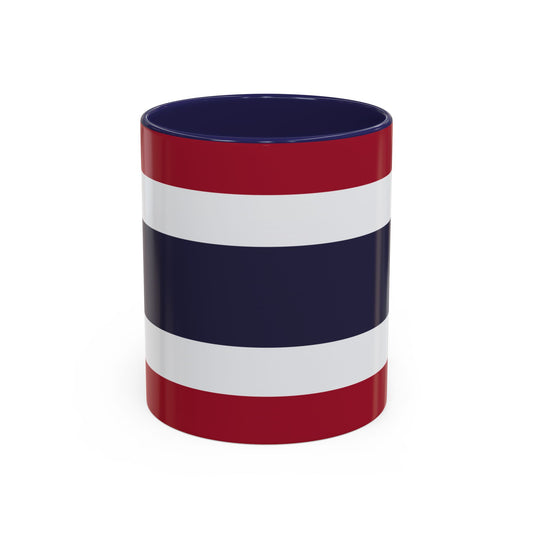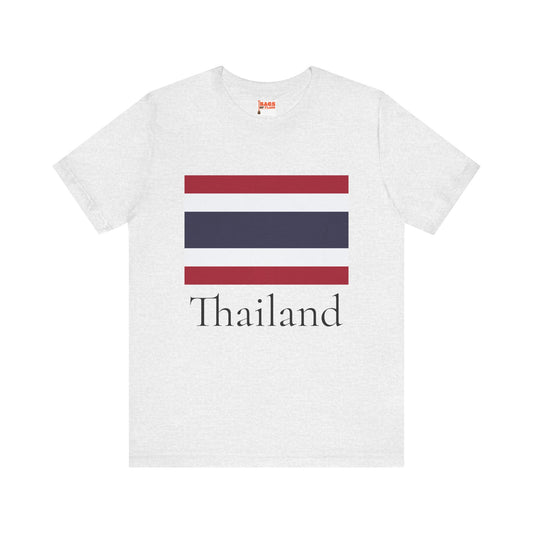-
Thailand Flag Sweatshirt
Regular price $34.15 USDRegular priceUnit price / per -
Thailand Sweatshirt
Regular price $34.15 USDRegular priceUnit price / per -
Thailand Pillow
Regular price $22.65 USDRegular priceUnit price / per -
Thailand Backpack
Regular price $59.79 USDRegular priceUnit price / per -
Thailand Leather Patch Hat
Regular price $18.85 USDRegular priceUnit price / per -
Thailand Mug
Regular price $11.65 USDRegular priceUnit price / per -
Thailand Trucker Cap
Regular price $14.90 USDRegular priceUnit price / per -
Thailand Hoodies
Regular price $34.40 USDRegular priceUnit price / per -
Thailand T-shirts
Regular price $22.79 USDRegular priceUnit price / per -
Thailand Flag Hoodies
Regular price $34.40 USDRegular priceUnit price / per -
Thailand Flag on T-shirt
Regular price $22.79 USDRegular priceUnit price / per
Collection: Thailand
The Thai flag is a symbol of national pride and identity for the Thai people. It is a vibrant and colorful flag that holds significant historical and cultural importance. We will explore the design, history, symbolism, current relevance, and additional facts and etiquette related to displaying the Thai flag.
Overview of the Thailand Flag

The national emblem of Thailand is characterized by five horizontal stripes in an arrangement that showcases the colors red, white, and blue. With a unique pattern that repeats - red, white, blue, white, then red - the central blue stripe is notably twice as wide as the other four. This design, while drawing inspiration from the country's predecessor, Siam, diverges significantly to encapsulate Thailand's core values and principles. The red stripes celebrate the nation's lifeblood and its people's commitment to independence.
In contrast, the white stripes convey the purity of Buddhism, the nation's major religion, and the moral values that underpin Thai society. The dominant blue stripe at the center is a nod to the monarchy, underscoring its central role in Thailand's national identity and the unity it fosters. Officially adopted on September 28, 1917, this flag has become a distinct symbol of Thailand. It serves as a visual representation of the nation's values, sovereignty, and the harmonious blend of its pivotal institutions.
Historical Context of the Flag
The evolution of the flag of Thailand traces back to the mid-19th century during the reign of King Mongkut (Rama IV) when the nation was known as Siam. Initially, the national emblem featured a plain red field, symbolizing tradition and the Siamese kingdom. This was later embellished with a white elephant, an important cultural and royal symbol, reflecting the monarch's power and the country's prosperity. As the political landscape of Siam shifted, so too did its flag. The most significant transformation occurred in 1917, under King Vajiravudh (Rama VI), when the current design, with its distinctive stripes and color scheme, was adopted.
This change marked a pivotal moment in Thai history, coinciding with a period of modernization and a move towards a more Western-style governance. The transition to the new flag design symbolized a new chapter in the nation's identity and a deliberate step towards unifying the country under symbols that represented its core values and aspirations. This period of change underscored Thailand's adaptability and the monarchy's role in guiding the nation through times of transition.
Symbolism Behind the Thailand Flag

The colors of the Thailand flag are rich in symbolism, each bearing a profound connection to the country's core values and societal pillars. The red stripes symbolize the nation's resilience and the sacrifices of its people in safeguarding their independence. This vibrant hue speaks to the heart of Thai nationalism and the collective spirit that binds the community. White, the color of purity and peace, reflects Buddhism's significant role in shaping society's moral and ethical framework. It highlights the spiritual foundation that guides the Thai people daily. T
he central blue stripe, representing the monarchy, underscores the institution's importance in fostering national unity and stability. This color choice is deliberate, illustrating the Thai people's deep reverence and loyalty to the royal family. These colors adorn the national flag and weave together the fabric of Thailand's identity, encapsulating its history, spirituality, and patriotic fervor. Through this flag, Thailand projects a message of unity, respect, and pride, reinforcing the nation's cherished values and ideals on both a national and international stage.
Current Relevance of the Thailand Flag
Today, the Thailand flag continues to play a crucial role in symbolizing national unity and pride. It is prominently displayed across a range of settings, from governmental buildings to educational institutions, and during significant cultural and military events. The flag's presence at these occasions reinforces its status as a potent emblem of Thai identity and sovereignty. Despite its esteemed position, the flag has occasionally found itself at the center of political debates and protests.
These instances highlight the complex relationship between national symbols and the expression of political views, underscoring the flag's relevance in contemporary discussions about governance and civil liberties in Thailand. Such controversies notwithstanding, the Thailand flag remains an enduring symbol of the country's heritage and aspirations, reflecting the deep bond between the Thai people and their nation. Its usage across various platforms and ceremonies continues to affirm its significance in the hearts and minds of Thais, serving as a reminder of their shared history and values.
Additional Facts and Etiquette for Displaying the Thailand Flag
Displaying the Thailand flag carries with it a set of guidelines designed to ensure it is always shown the utmost respect and honor. Notably, it should never touch the ground, emphasizing the flag's sacred nature. The use of the flag for purely decorative purposes is considered inappropriate, as it dilutes the flag's significance and the values it represents. During important national moments, such as the playing of the national anthem or during flag-raising ceremonies, it is customary for individuals to stand attentively as a sign of reverence. This practice underscores the deep respect the Thai people have for their national symbol.
In settings where multiple flags are displayed, the Thailand flag should occupy the position of highest honor, reflecting its supreme importance among other national symbols. This placement speaks to the flag’s paramount role in representing the sovereignty and pride of the nation. Furthermore, when the flag is not being flown, it should be folded carefully and stored in a manner that prevents damage, ensuring its longevity and continued respect.
These practices and guidelines serve not only as a means of showing respect for the flag but also as a way to instill a sense of national pride and unity among the Thai people. By adhering to these principles, Thais and visitors alike contribute to honoring Thailand's rich heritage and the enduring values embodied in its flag.






















